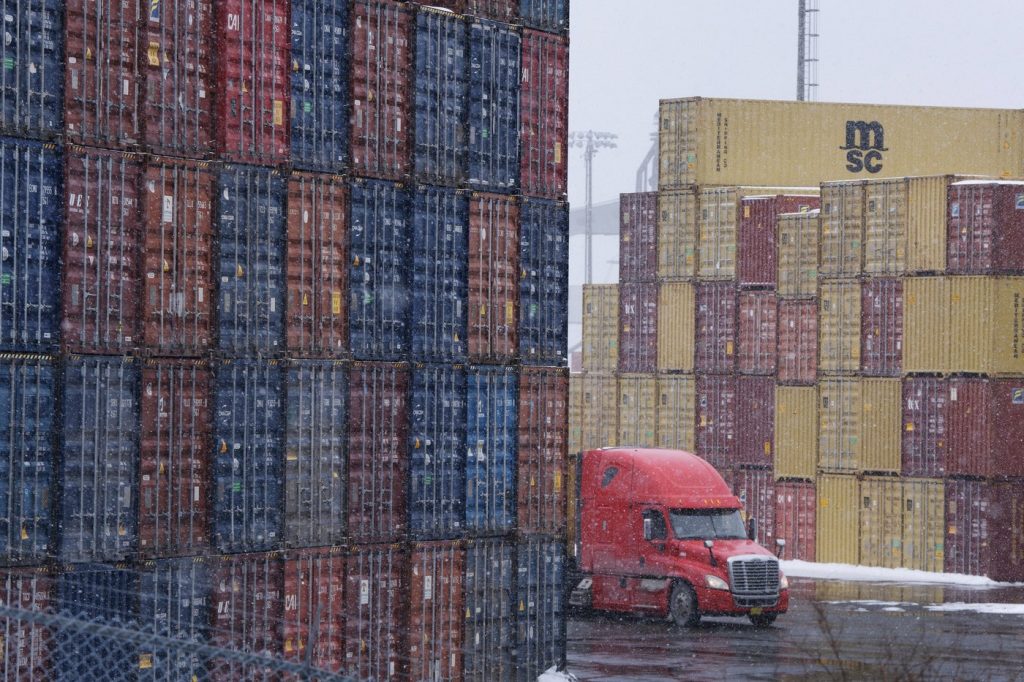MONTREAL – A recent report from the Montreal Economic Institute emphasizes the urgent need for technological upgrades in Canada’s major ports to enhance productivity. The author, Shal Marriott, argues that automation, including crane automation and robotics for cargo transport, is essential despite pushback from labor unions.
Marriott pointed out that Canada's largest ports have been underperforming, raising concerns about their competitiveness in global trade. The report highlights that Canada’s three major ports rank in the bottom 15 percent of over 400 container ports worldwide, primarily due to long vessel wait times. In a performance assessment by the World Bank and S&P Global Market Intelligence for 2023, Montreal was ranked 348th, Vancouver 356th, and Prince Rupert 399th out of 405 ports.
In 2022, the Port of Vancouver faced significant delays, placing it second-to-last after some cargo ships waited weeks to unload due to pandemic-related supply chain disruptions. Marriott contends that the threat of tariffs, particularly from the previous U.S. administration, underscores the necessity of overhauling port operations to remain competitive. She believes that improving port productivity will open new international trade opportunities for Canada, benefitting consumers and producers alike.
The report suggests that lagging innovation in Canadian ports is largely attributed to resistance from unionized workers, who have historically opposed automation initiatives. Unions argue that automation does not guarantee efficiency and diminishes their bargaining power, relying on a strong workforce as leverage in labor negotiations. A 2020 report from the B.C. Federation of Labour indicates that automation, while unstoppable, can and should be harnessed to enhance working conditions through collaborative approaches between employers and workers.
Automation has been a contentious issue at British Columbia ports, leading to significant labor disputes. Strikes in recent years, including an 11-day lockout due to 700 workers’ strike notices, have highlighted the friction between the push for automation and labor rights. Additionally, Montreal dockworkers have also engaged in strike actions with automation becoming a primary concern in ongoing mediation efforts. Similar tensions were noted in the U.S., where a deal was reached to allow partial automation while creating new jobs, reflecting the complexity of the issue across North America.
Despite the potential benefits, there is no consensus on the efficiency of waterfront automation. Reports from U.S. congressional watchdogs indicate that while automation could improve port efficiency, it often comes with high costs and extended recovery periods for investments. The OECD reported in 2021 that automated ports do not necessarily demonstrate greater productivity than their conventional counterparts, with a 2017 survey by McKinsey also revealing that labor costs could be reduced, but often at the expense of overall productivity.
The challenges faced by Canadian ports are compounded by an intricate supply network and disruptions, such as the notable 13-day strike at B.C. ports in July 2023. Reports indicate that as of four years ago, only a limited number of container ports had adopted partial automation, with even fewer using autonomous vehicles or automated cranes on site.
However, advancements are underway. Autonomous guided vehicles, designed to transport containers, are being adopted by some ports. For instance, Singapore, ranked 17th in the World Bank study, deploys these driverless vehicles, while Yokohama, Japan, has successfully integrated automated systems. Rotterdam also stands out as a pioneer in port automation, although it has historically ranked low compared to its manual peers despite being one of the world’s most technologically advanced ports.
This complex debate over automation and labor relations continues to shape the future of Canada’s ports, with implications for productivity and competitiveness in the global marketplace.










